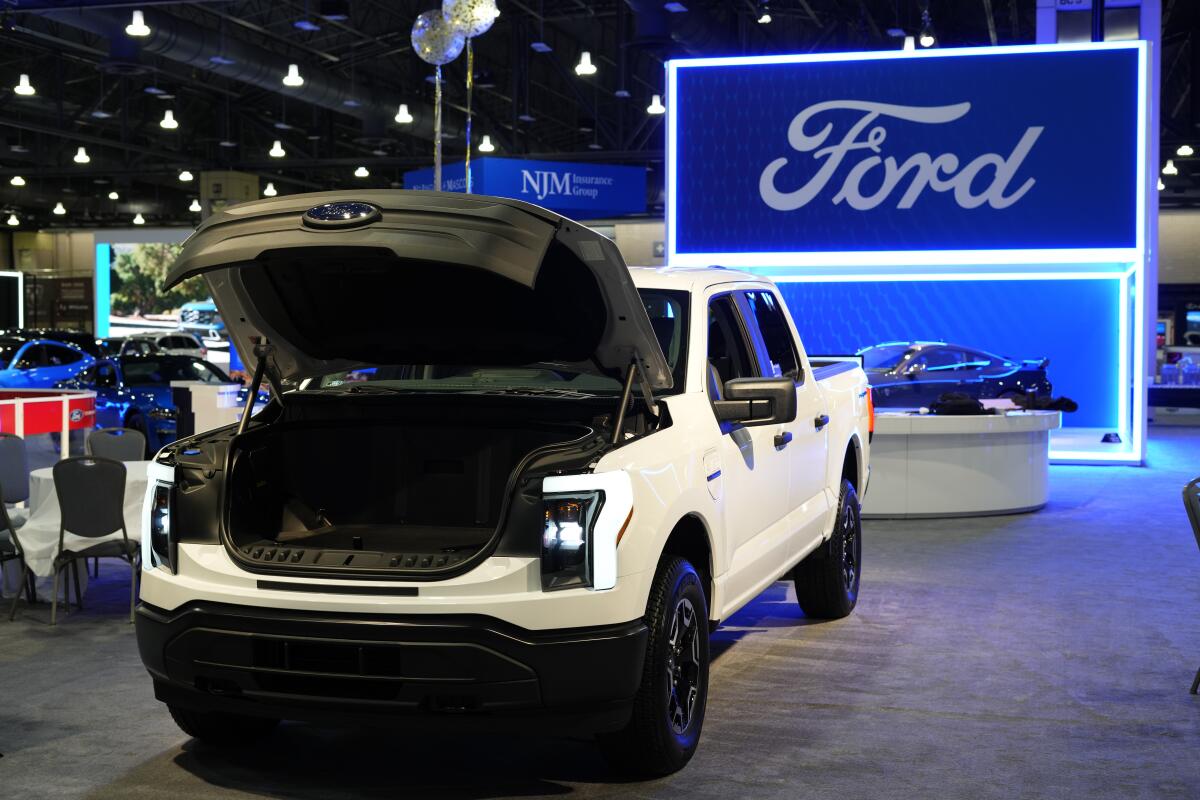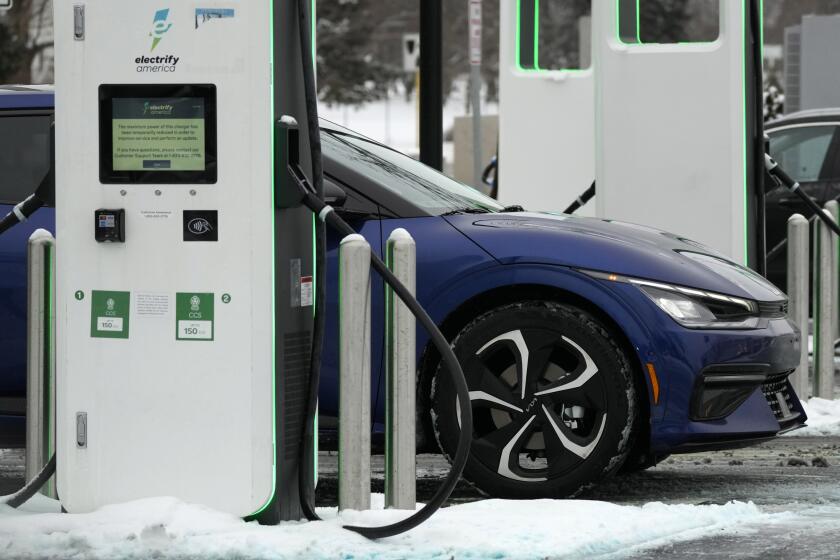These are the EV models that will get you the full $7,500 tax credit

- Share via
Although President Biden is eager to accelerate the nation’s rapid transition to electric vehicles, he’ll subsidize your EV purchase only if you buy American. And the options right now are slim.
The Biden administration on Monday released its list of EVs that qualify for a full $7,500 federal tax credit. Out of more than 90 EV models available today, only 10 qualify and they’re all from American car companies.
Eight are all-electric, and two are plug-in hybrids.
They are:
- Chrysler Pacifica
- Ford F-150 Lightning pickup
- Lincoln Aviator Grand Touring
- Cadillac Lyriq
- Tesla Model 3
- Tesla Model Y
- Chevrolet Bolt
- Chevrolet Blazer
- Chevrolet Equinox
- Chevrolet Silverado pickup
There’s an upper limit on the suggested retail price of $55,000 for the Chevy Bolt and the Tesla Model 3. The limit is $80,000 on the rest. The Pacifica minivan and the Lincoln SUV are the two plug-in hybrids.
Seven additional vehicles qualified for half-credits, or $3,750:
- Ford Escape plug-in hybrid
- Ford E-Transit
- Ford Mustang Mach-E
- Jeep Grand Cherokee plug-in hybrid
- Jeep Wrangler plug-in hybrid
- Lincoln Corsair Grand Touring
- Tesla Model 3 standard range rear-wheel drive
The first six must be sold for less than $80,000 to qualify; the Model 3, $55,000.
The average price of an electric vehicle sold in the U.S. was $58,725, according to Kelley Blue Book, compared with an average $47,713 for all new cars.
The Biden administration proposes new pollution limits that would require as many as two-thirds of new cars sold in the U.S. to be electric by 2032.
No longer eligible are cars from Volkswagen, Hyundai, Kia, Nissan, BMW, Volvo and Rivian. EVs from those carmakers, under rules interpreted by the U.S. Treasury, don’t source enough of their battery components or raw materials from North America to qualify.
California’s complicated EV subsidy program remains in full effect. Depending on household income and several other factors, state rebates on a variety of vehicles can range from nothing to several thousand dollars, on top of whatever the federal government offers.
More than 90 EV models are available for purchase, according to the Alliance for Automotive Innovation, an industry group that represents the major carmakers. The alliance has been supportive of the EV switch but has expressed frustration with the complicated and repeatedly shifting requirements coming out of the Biden administration.
John Bozzella, chief executive of the alliance, said Monday that affordable electric cars are essential to mass adoption and that subsidies should be “broadly available to as many customers and on as many EVs as possible.”
How that will pan out over the years is yet to be determined. Under the Inflation Reduction Act passed last year, electric vehicle makers must use increasing amounts of parts and materials sourced in North American, for both batteries and the vehicles themselves. Vehicles must be manufactured in North America as well.
Before the legislation, the subsidies were widely available to almost all electric car models. Although the list of qualified models may increase as automakers adapt, Bozzella said the U.S. probably reached the “high water mark” for EV subsidies and they will now be harder to come by.
The California’s Air Resources Board, who have been mandating emission standards for decades, recently voted to stop selling new gas cars in the state by 2035. But in this political climate, can California continue to lead the way?
The stringent made-in-America rules were included under pressure from Sen. Joe Manchin III (D-W.Va.), whose support was essential for the bill’s passage.
Automakers are spending billions to make the transition from internal combustion powertrains to battery electric systems, but most of the batteries are made outside the U.S. The vast majority of the materials used in battery production — nickel, cobalt, lithium and others — are mined and processed outside the U.S. as well, much of it in China.
As such, the Inflation Reduction Act’s home-country sourcing requirements will be difficult to achieve. Several new U.S.-based battery factories have been announced, but whether the supply will meet demand is yet to be determined. Expanded mining and processing of raw minerals will take years, in large part due to regulatory red tape, an issue that some in Congress are seeking to correct.
The longer it takes to onshore production of batteries and raw materials, the shorter the list of subsidy-qualified vehicles will be.
The new subsidy program takes effect Tuesday.
More to Read
Inside the business of entertainment
The Wide Shot brings you news, analysis and insights on everything from streaming wars to production — and what it all means for the future.
You may occasionally receive promotional content from the Los Angeles Times.













